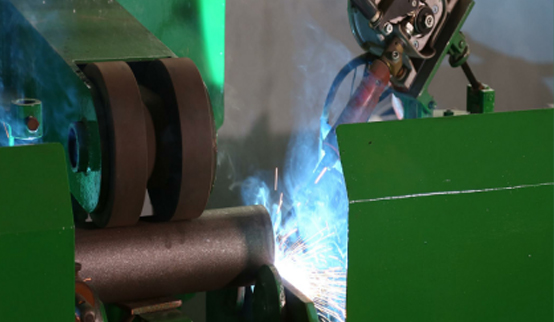 Afrikaans
Afrikaans  Albanian
Albanian  Amharic
Amharic  Arabic
Arabic  Armenian
Armenian  Azerbaijani
Azerbaijani  Basque
Basque  Belarusian
Belarusian  Bengali
Bengali  Bosnian
Bosnian  Bulgarian
Bulgarian  Catalan
Catalan  Cebuano
Cebuano  Corsican
Corsican  Croatian
Croatian  Czech
Czech  Danish
Danish  Dutch
Dutch  English
English  Esperanto
Esperanto  Estonian
Estonian  Finnish
Finnish  French
French  Frisian
Frisian  Galician
Galician  Georgian
Georgian  German
German  Greek
Greek  Gujarati
Gujarati  Haitian Creole
Haitian Creole  hausa
hausa  hawaiian
hawaiian  Hebrew
Hebrew  Hindi
Hindi  Miao
Miao  Hungarian
Hungarian  Icelandic
Icelandic  igbo
igbo  Indonesian
Indonesian  irish
irish  Italian
Italian  Japanese
Japanese  Javanese
Javanese  Kannada
Kannada  kazakh
kazakh  Khmer
Khmer  Rwandese
Rwandese  Korean
Korean  Kurdish
Kurdish  Kyrgyz
Kyrgyz  Lao
Lao  Latin
Latin  Latvian
Latvian  Lithuanian
Lithuanian  Luxembourgish
Luxembourgish  Macedonian
Macedonian  Malgashi
Malgashi  Malay
Malay  Malayalam
Malayalam  Maltese
Maltese  Maori
Maori  Marathi
Marathi  Mongolian
Mongolian  Myanmar
Myanmar  Nepali
Nepali  Norwegian
Norwegian  Norwegian
Norwegian  Occitan
Occitan  Pashto
Pashto  Persian
Persian  Polish
Polish  Portuguese
Portuguese  Punjabi
Punjabi  Romanian
Romanian  Russian
Russian  Samoan
Samoan  Scottish Gaelic
Scottish Gaelic  Serbian
Serbian  Sesotho
Sesotho  Shona
Shona  Sindhi
Sindhi  Sinhala
Sinhala  Slovak
Slovak  Slovenian
Slovenian  Somali
Somali  Spanish
Spanish  Sundanese
Sundanese  Swahili
Swahili  Swedish
Swedish  Tagalog
Tagalog  Tajik
Tajik  Tamil
Tamil  Tatar
Tatar  Telugu
Telugu  Thai
Thai  Turkish
Turkish  Turkmen
Turkmen  Ukrainian
Ukrainian  Urdu
Urdu  Uighur
Uighur  Uzbek
Uzbek  Vietnamese
Vietnamese  Welsh
Welsh  Bantu
Bantu  Yiddish
Yiddish  Yoruba
Yoruba  Zulu
Zulu Rubber Conveyor Belt Rollers for Efficient Material Handling and Transportation Solutions
Understanding Rubber Conveyor Belt Rollers
Rubber conveyor belt rollers play a crucial role in the transportation of materials in various industries, including mining, manufacturing, and logistics. Conveyors are essential systems designed to move bulk materials efficiently from one location to another. Within these systems, rollers serve as a vital component, facilitating the smooth operation of conveyor belts and ensuring that materials are transported safely and reliably.
The Function of Rollers
Rollers are primarily used to support the conveyor belt and maintain its alignment. They are installed at regular intervals along the conveyor system, allowing the belt to move smoothly over them. The structure of these rollers is designed to reduce friction between the belt and the supporting surface, which helps increase the life of the belt and the overall efficiency of the conveyor.
In addition to supporting the belt, rollers play a significant role in maintaining the tension required for optimal belt performance. Proper tension is essential to prevent slippage, which can lead to wear and tear on the belt and lower operational efficiency. Rubber conveyor belt rollers are equipped with various features, such as grooves and bearings, that help ensure the belt remains tensioned and aligned throughout its operation.
Materials and Durability
The construction of rubber conveyor belt rollers is typically designed to withstand harsh environments and heavy loads. Rubber is chosen for its excellent abrasion resistance, flexibility, and ability to absorb shock, making it well-suited for the demands of industrial applications. Depending on the specific application, rollers can be produced with different types of rubber compounds to enhance their performance characteristics, such as resistance to chemicals, oil, or heat.
rubber conveyor belt rollers

Many roller manufacturers also implement advanced technologies, such as incorporating ceramic liners or utilizing rubber with enhanced durability, to extend the lifespan of the rollers
. This focus on durability not only maximizes productivity but also reduces maintenance costs, making rubber conveyor belt rollers a cost-effective solution for businesses.Varieties of Rollers
There are several types of rubber conveyor belt rollers, each designed to meet specific needs. Carrying rollers, for instance, are the most common type utilized to support the load on the conveyor belt. Return rollers, on the other hand, are used to support the belt as it returns to the loading point, preventing sagging and ensuring efficient movement.
Impact rollers are specially constructed to absorb the shock of heavy materials being loaded onto the conveyor, thereby protecting the belt and extending its life. Additionally, training rollers help guide the belt and prevent misalignment, ensuring smooth operation.
Conclusion
Rubber conveyor belt rollers are an integral part of any conveyor system, contributing to the efficient movement of materials in industrial settings. Their design, made from durable materials, ensures they can withstand the rigors of heavy loads and challenging environments. As industries continue to evolve, the innovation in roller technology ensures that they remain central to optimizing conveyor operations. By understanding the different types of rollers and their functions, businesses can make informed decisions to enhance productivity and minimize downtime in their operations.
-
Revolutionizing Conveyor Reliability with Advanced Rubber Lagging PulleysNewsJul.22,2025
-
Powering Precision and Durability with Expert Manufacturers of Conveyor ComponentsNewsJul.22,2025
-
Optimizing Conveyor Systems with Advanced Conveyor AccessoriesNewsJul.22,2025
-
Maximize Conveyor Efficiency with Quality Conveyor Idler PulleysNewsJul.22,2025
-
Future-Proof Your Conveyor System with High-Performance Polyurethane RollerNewsJul.22,2025
-
Driving Efficiency Forward with Quality Idlers and RollersNewsJul.22,2025





























